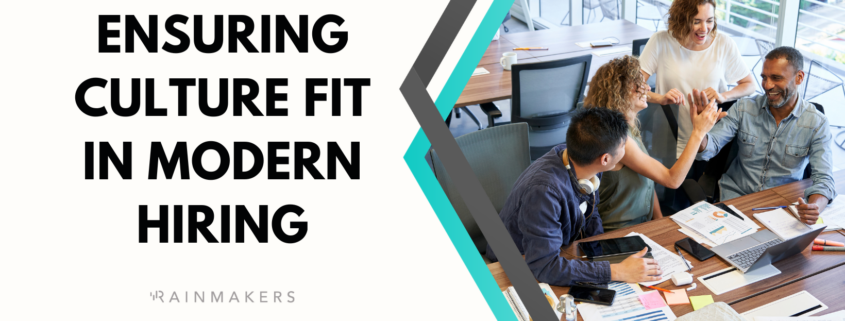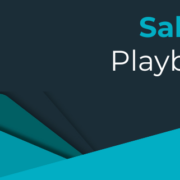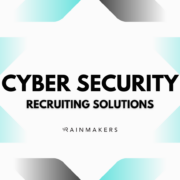How To Measure Cultural Fit When Hiring
Advanced Hiring Strategies
The recruitment world has undergone a paradigm shift with ‘culture fit’ transitioning from mere catchphrases to foundational elements of effective hiring. While the weightage given to qualifications and prior experience hasn’t diminished, the harmony between an individual’s inherent values and the organization’s ethos significantly influences job contentment, productivity, and retention.
So, how can businesses adeptly traverse the intricate pathways of culture fit? This guide focuses on demystifying misconceptions and imparting actionable tactics to guarantee you recruit individuals who resonate with the role and your organizational culture.
True Culture Fit
When peeled back to its essence, culture fit isn’t about recruiting clones of your existing employees but bridging mutual values, aspirations, and worldviews.
- Definition: At its most basic, culture fit is the synchronization between an employee’s principles and the organization’s foundational values and culture.
- Significance: Employees who vibrate at the same frequency as the company’s guiding principles and objectives often display heightened engagement, drive, and allegiance. This harmony propels enhanced efficiency and minimizes attrition.
- Looking Beyond Recognizing that cultural fit doesn’t equate to uniformity in thought and action is vital. It’s less about identical personalities and more about converging values and collective objectives.
The Myths Surrounding Culture Fit
The principle might seem straightforward, but it’s frequently shrouded in misinterpretations. Let’s debunk some common misconceptions.
- Not Just About Perks: It’s a common fallacy to equate office perks, like recreational zones or complimentary snacks, with company culture. Although they might mirror facets of it, genuine culture delves much deeper, rooted in shared ambitions and a united belief framework.
- More Than Mere Personalities: Culture fit transcends pigeonholing teams as introverted or extroverted. It’s primarily about harmonizing values while celebrating varied personalities.
- Dynamic in Nature: Company culture is fluid. As the business trajectory shifts, so does its culture, making the quest for culture an ongoing endeavor.
Importance of Diversity
Contrary to common belief, championing diversity doesn’t conflict with nurturing a cohesive culture; they complement each other beautifully.
Monolithic teams, with their uniform perspectives, often fall prey to the pitfalls of ‘groupthink,’ which stifles innovation. On the other hand, diverse teams bring together a rich tapestry of experiences, insights, and perspectives, leading to vibrant dialogues and the potential for breakthrough solutions.
It’s essential to understand that while fostering a unified culture is crucial, it shouldn’t suppress diverse viewpoints. The goal is to create an environment where all individuals feel a deep sense of belonging and alignment with the company’s core values, regardless of their backgrounds.
Interview Questions to Gauge Culture Fit
The interview stands as your frontline mechanism to determine cultural congruence. Here’s a blueprint to refine this process.
- Beyond Paper Qualifications: While dissecting a candidate’s professional trajectory and competencies remains essential, the dialogue should concurrently delve into their intrinsic values, driving forces, and overarching vision.
- Sample Questions to Consider:
- What corporate principles resonate profoundly with you?
- Can you narrate an experience where you felt a disconnect with a past employer’s culture and your coping strategy?
- Beyond tangible metrics, how do you perceive success in your role?
- The Art of Listening: It’s imperative to realize that the efficacy of the interview isn’t solely dependent on the questions posed. The real litmus test involves attentively processing and interpreting the responses to discern alignment.
Non-Verbal Signals to Look For
While verbal exchanges provide valuable insights, unspoken gestures often give a clearer glimpse into the essence of an individual. For instance, observing a candidate’s body language can reveal their inclination to lean forward when discussing topics they align with, or the gleam in their eyes when discussing projects that mirror your company’s character can signal genuine enthusiasm and a sense of alignment.
Additionally, the depth of a candidate’s passion and their fit with your corporate culture might be reflected in the nuances of their tone, particularly when they reflect on past experiences or discuss their aspirations.
However, it’s crucial to ensure consistency between what is being said and the non-verbal cues being offered. A lack of congruence can serve as a warning, suggesting potential inauthenticity or uncertainty on the candidate’s part.
Adaptability
In the recruitment landscape, while shared principles and organizational vision undeniably hold immense value, another element that’s increasingly gaining recognition – is adaptability. This pivotal trait can significantly shape an employee’s journey within a company, ensuring their alignment with the culture in the long run.
Adaptability embodies an individual’s capacity to navigate changes seamlessly, extract lessons from fresh scenarios, and embrace a malleable stance when facing challenges.
The Dynamic Work Landscape
The business world today is characterized by its ever-evolving nature. Companies are constantly in flux, with strategies, goals, and environments perpetually shifting. In such a fluid setup, adaptability plays a vital role. It ensures that employees can morph and grow with these changes and remain in sync with the company’s cultural fabric.
When evaluating a potential hire, ask questions like:
- “How did you navigate a major transformation in your previous workplace?”
- “Could you walk us through an instance where you had to master a new skill or methodology in your role swiftly?”
Technological Tools to Utilize
The contemporary recruitment process is no longer confined to traditional face-to-face interactions. Technology has emerged as a potent ally, enhancing our capabilities to measure cultural alignment with greater precision.
- Personality Evaluation Platforms: Tools such as the Predictive Index or Hogan Assessments can shed light on the intrinsic personality nuances of candidates. These insights can be pivotal in determining how well an individual might integrate with your team dynamics.
- Virtual Reality (VR) Inductions: The virtual realm offers an immersive introduction to your organizational culture. By allowing candidates to experience team gatherings, ideation sessions, or even a virtual tour of your workspace via VR, you can more accurately assess their adaptability and unity with your cultural milieu.
- Feedback and Data Analysis: Platforms that gather post-interview remarks on candidates are invaluable. By meticulously analyzing this feedback, patterns or consistent traits that align or diverge from your company’s culture can be identified and acted upon.
When the Quest for Cultural Fit Goes Astray
As integral as culture fit is to the hiring process, an overemphasis or misinterpretation can lead to potential pitfalls.
An unwavering focus on hiring candidates with similar thought processes or behaviors can inadvertently suppress diversity, creativity, and innovation. There’s a delicate balance to maintain. While cultural alignment is crucial, sidelining competence and skill can spell disaster for the company’s growth trajectory.
Red Flags to Be Wary Of:
- Candidates who seem overly engrossed in organizational perks, sidelining the core mission and values.
- A pronounced desire to conform without significant mention or evidence of personal principles and convictions.
Nurturing Cultural Cohesion Post-Hire
The culmination of the hiring process marks the commencement of a new phase. Ensuring that the newly onboarded talent continues vibrating harmoniously with the company’s culture is imperative.
Consistent Touchpoints:
Organizing regular one-on-one sessions provides a platform to evaluate and ensure an employee’s sustained cultural alignment. It also presents an opportunity to address emerging concerns proactively.
Hosting workshops that serve dual purposes – enhancing skills while concurrently instilling organizational values – can be immensely beneficial.
Feedback Mechanisms to Employ:
- Peer Insights: Fostering a culture where team members regularly exchange feedback can be revealing. These interpersonal evaluations often unravel nuanced facets of cultural fit and alignment.
- Anonymous Surveys: Implementing anonymous polls and surveys helps gauge the pulse of the workforce. It ensures employees feel connected and aligned with the ever-adaptive organizational culture.
Need Professional Help?
The full potential of culture fit isn’t passive; it’s a dynamic commitment. As organizations evolve, so do their cultural nuances. The power of a unified workforce, moving in tandem with an organization’s ethos, can be transformative. So, don’t just read about it – embrace it.
Equip yourself with the tools, insights, and strategies this guide presents, and revolutionize your recruitment process. Start today because, in the world of recruitment, culture isn’t just an aspect; it’s the compass.
If you need help finding candidates to join your team, easily sign-up now with Rainmakers!










